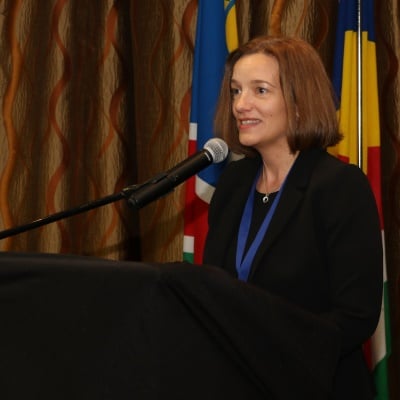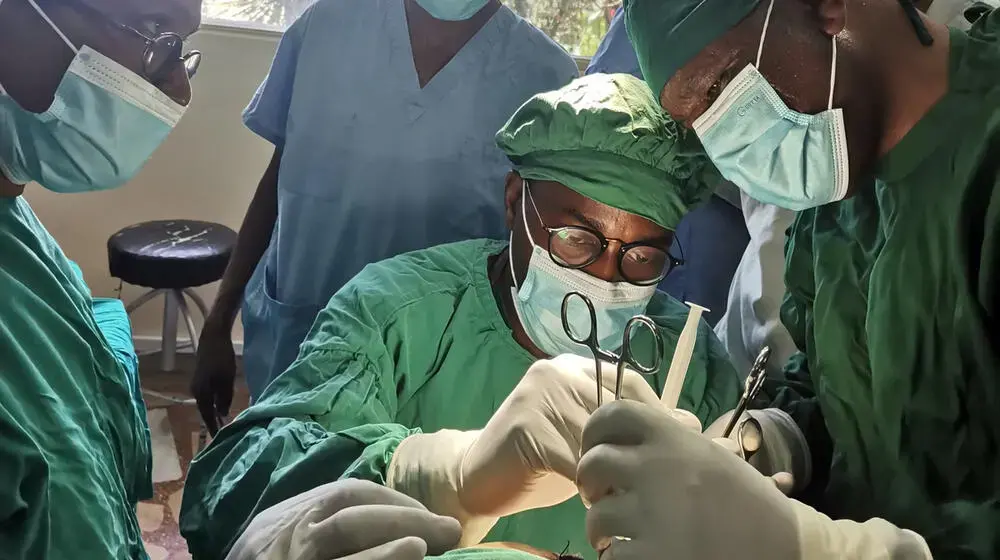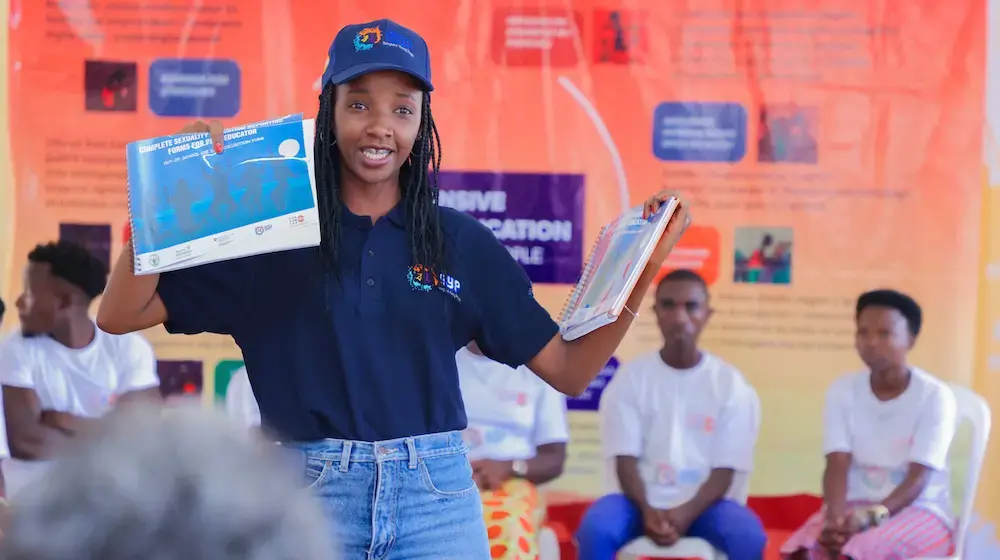EZULWINI, Swaziland – In a landmark moment in the commitment to ending child marriages in the region, the 39th Plenary Assembly of the SADC Parliamentary Forum officially adopted the SADC Model Law on Eradicating Child Marriage and Protecting Those Already in Marriage on June 3.
The Model Law was introduced by the Deputy President of the Parliament, Joseph Njobvuyalema of Malawi.
The Draft Model Law was considered during the 38th Plenary Assembly in Swakopmund, Namibia, in November 2015. This was reviewed by civil society organizations (CSOs) and legal drafters from Member States in line with the resolution of the 38th Plenary Assembly Session, and it was this document that was tabled before the 39th Plenary Assembly for approval and adoption.
The President invited the mover and seconders for the Motion to adopt the Law.
The motion was raised by Innocent Gonese of Zimbabwe during the morning session of the SADC PF’s Plenary Session on 3 June and seconded by Jessie Kabwila of Malawi. Mr. Gonese gave a historical background of the development of the model law, tracing and highlighting key implementation milestones from its inception in 2015.
While the Model Law alone might not eradicate child marriage, it was “a good and sound foundation to enable the eradication of child marriage in the region,” Mr. Gonese said. He recognised the support provided in the Model Law development processes by UNFPA, the United Nations Population Fund, the United Nations Development Programme (UNDP), the Embassy of Sweden, Plan International, Southern Africa Litigation Centre and Girls Not Brides.
Closing the loopholes

Jessie Kabwila of Malawi said the Model Law would be instrumental in closing all loopholes in SADC countries’ legislation on child marriage. However, the adoption of the Law was only the beginning, she said, and she appealed to individual SADC countries to domesticate and implement it without delay.
The Model Law was then adopted, section by section, by the members of the SADC PF, with minimal recommendations for change, all of which did not affect any substantive content of the law. Following the review and adoption of all eight parts of the draft law, the Model Law was officially adopted by the SADC Parliamentary Assembly.
The Model Law sets the standard and guidance for legislators, policymakers and other stakeholders in SADC Members States to develop or amend their national laws to eradicate child marriages and protect those already in marriage. It is a holistic piece of model legislation with eight parts that deal comprehensively with different issues relating to child marriage, including the prohibition of child betrothal and marriage; measures and interventions to prevent child marriage; measures to mitigate the effects of child marriage; data and information, public awareness and evaluation; and general offences and their enforcement.
Saving millions of girls from the harmful practice
After its adoption, the President gave ten organizations the opportunity to make solidarity statements in support of the SADC Parliamentary Forum. The agencies included the Pan-African Parliament, the East African Legislative Assembly, ECOWAS Parliament, SAD, the African Union, the Embassy of Sweden in Lusaka, UNFPA, UNAIDS, UNDP, and Plan International, which represented civil society organizations.
Justine Coulson, Deputy Regional Director for UNFPA East and Southern Africa, commended the SADC-PF for its historic adoption of the Model Law, which would serve as a best practice for the region and save millions of girls from the harmful practice of child marriage, which violates their rights and prevents them from achieving their potential.
Chief Theresa Kachindamoto of Malawi, who was sponsored by UNFPA, described her experience of developing bylaws against child marriage and annulling all marriages contracted after the adoption of a national law that raised the age of marriage to 18, in 2015. Her push to annul child marriages prompted other chiefs to do the same, leading to an annulment of more than 700 marriages involving both girls and boys.
She had also disqualified four chiefs who presided over the marriages of minors, to teach them a lesson, but reinstated them after they pledged to abide by the national law and community bylaws. Child marriage can be defeated if all parties put their hands together and enforced the law, she said.
Strategies for implementation at country level
Following the adoption of the Model Law, a side event was held with SADC parliamentarians to discuss strategies for its domestication and implementation at country level, to ensure that the Model Law translated into effective change in the lives of married girls, girls at risk of marriage, and their communities.
The event allowed parliamentarians to hear from people who had lived experiences of child marriage, including girls in child marriages, women who had been child brides, and chiefs who had abolished child marriages in their communities. Other perspectives included family perspectives and those of male advocates against child marriage.
At a gathering to celebrate its official adoption that evening, the SADC Parliamentarians and partners heard from girls and women who had experience of child marriage, as well as leaders, advocates and activists who had dedicated their efforts to ending child marriage.
Heart-wrenching stories of child brides
Charity, a 20-year-old woman from Malawi, shared her heart-wrenching story of enduring child marriage. Initiated when just 11 years old and married at 12, she suffered physical, sexual and financial abuse. However, a ray of hope came from a non-governmental organization (NGO) that assisted her, and now she dreams of being a law enforcement officer.
Chipasha, a young woman from Zambia, also shared her story. She was married off by her father as an adolescent and suffered repeated beatings and sexual abuse, until she was eventually rescued by an NGO. Her story is one of hope: she eventually finished high school, got a divorce, and enrolled at university.
Joyce Gama, a widow and a single mother of four girls, from Swaziland, told her story of fighting against family members pressuring her to marry off her 16-year-old daughter, who was pregnant. She insisted that her daughter should be educated and finish secondary school. Even though she was poor, she managed to sell off goods to pay to keep her daughter in school and hired a nanny to look after the baby. She told of her daughter’s eventual triumph as she finished school, graduated from college and is now a successful independent woman.
Chief Chikanta (Andrew Muzundu) from Zambia underscored that child marriage was not part of African culture and appealed to all traditional leaders to be strong advocates and activists to eradicate all forms of child marriage and betrothals.
Every day we delay, 19,000 young girls are being forced into child marriage.
- Justine Coulson, Regional Deputy Director for UNFPA East and Southern Africa
‘Domesticate and implement!’
Parliamentarians, traditional leaders, development partners, and civil society organizations spoke of the need to speedily enact and implement local laws to eradicate child marriage and to protect those children already in marriage.
Underpinning the need to accelerate the translation of the Model Law into a reality for girls in Africa, Ms. Coulson noted: “Every day we delay, there are 19,000 young girls who are being forced into child marriage.”
Dr. Asha Mohamud, UNFPA Regional Youth Advisor, lauded those who had contributed to the development of and advocacy for the Model Law and encouraged Parliamentarians to advocate vigorously for its domestication and implementation.
By Phumzile Dlamini




